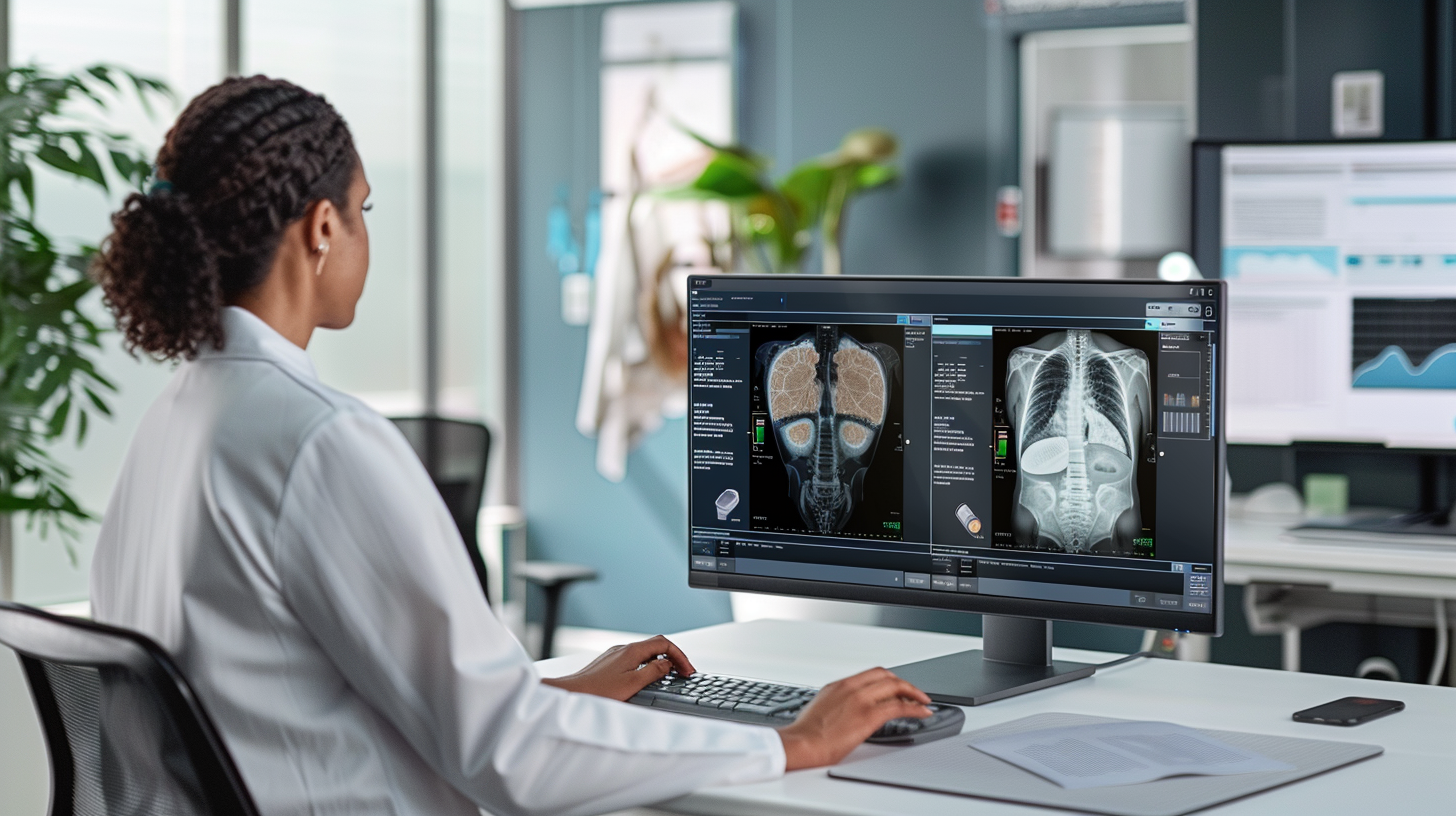Medical devices play a crucial role in the healthcare industry by aiding in the diagnosis, monitoring, and treatment of various medical conditions. However, before these devices can be made available to the public, they must undergo a stringent regulatory process to ensure their safety and effectiveness. This is particularly true for Radiology Information Systems (RIS), which serve as an essential tool in radiology departments for managing patient data and imaging workflows. In this article, we will explore the intricacies of FDA regulations pertaining to RIS as a medical device, allowing healthcare professionals and manufacturers to navigate the regulatory landscape with confidence.Expanding on the topic of FDA regulations for Radiology Information Systems (RIS), it is important to note that the FDA's oversight of medical devices, including RIS, is aimed at ensuring patient safety and device effectiveness. The FDA regulates RIS under the framework of the Medical Device Reporting (MDR) regulations, which require manufacturers, importers, and device user facilities to report adverse events and product problems. This reporting system helps the FDA monitor the performance of medical devices like RIS in the market and take necessary actions to mitigate risks.Furthermore, compliance with FDA regulations involves not only initial approval but also ongoing monitoring and quality assurance. Manufacturers of RIS must adhere to Good Manufacturing Practices (GMP) to ensure the quality and consistency of their products. This includes maintaining proper documentation, implementing quality control measures, and conducting regular audits to assess compliance. By upholding these standards, manufacturers can demonstrate the safety and effectiveness of their RIS to regulatory authorities and healthcare providers, ultimately benefiting patients and improving overall healthcare outcomes.
Defining Radiology Information Systems (RIS)
RIS systems are integral to the efficient functioning of radiology departments. These systems encompass a wide range of functionalities, including patient registration, image acquisition, report generation, and communication with other healthcare systems. The FDA defines RIS as a device intended for use in the diagnostic purposes of medical imaging or treatment planning by providing storage, retrieval, and distribution of patient information and clinical images.
One key feature of RIS is its ability to streamline workflow within radiology departments. By automating tasks such as scheduling, billing, and results reporting, RIS helps to improve efficiency and reduce errors. This automation not only saves time for radiologists and support staff but also enhances the overall quality of patient care by ensuring that critical information is readily available when needed.
Furthermore, RIS systems play a crucial role in enhancing communication and collaboration among healthcare providers. Through integration with picture archiving and communication systems (PACS) and electronic health records (EHR), RIS facilitates seamless sharing of diagnostic images and reports across different departments and healthcare facilities. This interoperability is essential for providing comprehensive and coordinated care to patients, as it enables healthcare professionals to access relevant information quickly and make informed decisions about diagnosis and treatment.
Overview of FDA Medical Device Classifications
To ensure appropriate regulatory oversight, the FDA classifies medical devices into various categories based on their intended use and associated risks. These classifications range from Class I (low risk) to Class III (high risk). RIS systems typically fall under Class II or Class IIa, depending on their intended use and specific features. Understanding the classification of RIS aids manufacturers in determining the applicable regulatory requirements for their device.
Class I devices are considered low risk and are subject to general controls, such as establishment registration, device listing, and adherence to good manufacturing practices. In contrast, Class II devices are moderate-risk devices that require special controls to provide reasonable assurance of safety and effectiveness. Class IIa devices, a subset of Class II, may include devices like powered wheelchairs or infusion pumps, which have a higher level of risk compared to Class IIb devices.
Furthermore, Class III devices are high-risk devices that are typically life-sustaining or life-supporting, such as implantable pacemakers or heart valves. These devices undergo the most stringent regulatory scrutiny, including premarket approval to demonstrate their safety and effectiveness before they can be marketed. Understanding the nuances of FDA medical device classifications is crucial for manufacturers to navigate the regulatory landscape and bring safe and effective medical devices to market.
Regulatory Pathways for RIS
Once the classification of an RIS system is determined, manufacturers must follow the appropriate regulatory pathway to bring their device to market. There are two primary regulatory pathways for RIS: the Pre-Market Approval (PMA) process and the 510(k) clearance process.
Ensuring compliance with regulatory requirements is crucial for manufacturers of Radiology Information Systems (RIS) to navigate the complex landscape of medical device approval. Understanding the nuances of each regulatory pathway is essential for a successful market entry strategy.
Pre-Market Approval (PMA) Process for RIS
The PMA process is the most stringent pathway for obtaining FDA approval for high-risk medical devices, including certain types of RIS. Manufacturers must provide extensive scientific evidence demonstrating the safety and efficacy of the device. This process involves rigorous clinical trials and a comprehensive review by the FDA. While the PMA process ensures a higher level of scrutiny, it can be time-consuming and resource-intensive.
Manufacturers embarking on the PMA process for their RIS must be prepared to invest significant time and resources in compiling data, conducting clinical studies, and engaging in extensive interactions with regulatory authorities. The thoroughness of the PMA process is designed to provide a robust evaluation of the device's safety and effectiveness, ensuring patient health and well-being are prioritized.
510(k) Clearance for RIS
Under the 510(k) clearance process, manufacturers can seek FDA clearance for RIS systems that are substantially equivalent to legally marketed devices (predicate devices). To obtain clearance, manufacturers must demonstrate that their device has the same intended use and technological characteristics as the predicate device and does not raise any new safety concerns. The 510(k) clearance process is typically more efficient and less burdensome than the PMA process.
While the 510(k) clearance process offers a quicker route to market compared to the PMA process, manufacturers must still ensure that their RIS meets all regulatory requirements and standards for safety and performance. Thorough documentation and a comprehensive understanding of the predicate device are essential for a successful 510(k) submission.
Quality System Regulations (QSR) Compliance
In addition to the regulatory pathways mentioned above, manufacturers of Radiology Information Systems (RIS) must also comply with the FDA's Quality System Regulations (QSR). The QSR outlines a set of requirements for quality management systems, including design controls, document controls, and corrective and preventive actions. Compliance with QSR is essential to ensure the safety, efficacy, and reliability of RIS systems.
Design controls under the QSR require manufacturers to establish and maintain procedures to ensure that the design of the RIS system meets specified requirements. This includes conducting design reviews, verifying and validating the design, and documenting design changes. Document controls mandate that manufacturers maintain procedures to control all documents related to the RIS system, ensuring that only current and approved documents are used in production. Corrective and preventive actions require manufacturers to establish procedures for investigating nonconformities and implementing measures to prevent their recurrence.
Furthermore, compliance with the QSR involves regular audits by the FDA to assess manufacturers' adherence to the regulations. These audits may include inspections of facilities, review of documentation, and interviews with personnel involved in the design and production of RIS systems. Non-compliance with the QSR can result in warning letters, fines, or even product recalls, highlighting the importance of maintaining robust quality management systems in the medical device industry.
Post-Market Surveillance and Reporting
Once a RIS system receives FDA approval or clearance and enters the market, manufacturers must adhere to post-market surveillance requirements. This involves monitoring the device's performance and safety in real-world settings. Manufacturers are also obligated to report any adverse events or malfunctions to the FDA. Timely reporting of adverse events ensures the continuous monitoring of device safety and enables prompt regulatory actions, if necessary.
Post-market surveillance is a critical aspect of ensuring the ongoing safety and effectiveness of medical devices. It allows manufacturers to collect data on how their devices perform in real-world scenarios, beyond the controlled environment of clinical trials. This data can help identify any potential issues that may not have been evident during the pre-market testing phase. By analyzing this information, manufacturers can make informed decisions about any necessary modifications or improvements to their devices to enhance patient safety and outcomes.
In addition to monitoring the performance of the device itself, post-market surveillance also involves tracking how healthcare providers and patients interact with the device. This includes collecting feedback on usability, training needs, and any challenges encountered during device use. By gathering this information, manufacturers can develop targeted educational materials or training programs to support healthcare providers in using the device effectively and safely. Ultimately, post-market surveillance plays a crucial role in ensuring that medical devices continue to meet the highest standards of quality and safety throughout their lifecycle.
Best Practices for Ensuring Compliance
To navigate the FDA regulations successfully, healthcare professionals and manufacturers should adopt best practices that ensure compliance. It is crucial to not only meet the regulatory requirements but also to exceed them to ensure the highest level of patient safety and quality of care.
One additional key practice to consider is conducting regular audits and assessments of the RIS system to identify any potential gaps in compliance. These audits can help in proactively addressing issues before they escalate and ensuring that the system meets all necessary regulatory standards consistently.
- Thoroughly understand the classification of RIS systems and the associated regulatory requirements.
- Establish a comprehensive quality management system that adheres to the FDA's QSR.
- Maintain clear documentation of the RIS development process, including design controls and risk management.
- Stay informed about updates to FDA regulations and guidance related to RIS as a medical device.
- Maintain robust post-market surveillance to identify and address any potential safety concerns.
- Collaborate with regulatory experts and consultants to ensure compliance throughout the regulatory process.
By following these best practices, healthcare professionals and manufacturers can navigate the FDA regulatory landscape for RIS systems effectively, ensuring patient safety and facilitating the continued advancement of radiology practices. Understanding the various regulations and employing a proactive approach to compliance will not only streamline the regulatory process but also contribute to the overall success and reliability of RIS systems in healthcare settings.
Conclusion
The FDA regulations for RIS as a medical device ensure the safety, efficacy, and reliability of these critical systems in radiology departments. It is imperative for healthcare professionals and manufacturers to have a comprehensive understanding of these regulations to navigate the regulatory landscape successfully. By complying with the appropriate regulatory pathways, adhering to quality management systems, and implementing best practices, stakeholders can ensure the continuous improvement and appropriate use of RIS systems in healthcare.
As you seek to ensure the safety, efficacy, and reliability of your Radiology Information Systems (RIS) in compliance with FDA regulations, consider the power of AbbaDox, the all-in-one platform designed to optimize radiology workflows. Unify your imaging center operations with our cloud-based workflow automation platform, and experience the difference that comes with improved operational efficiencies. To discover how AbbaDox can streamline and automate your routine work tasks, meet with a product consultanttoday and take the first step towards a seamless, integrated radiology practice.







